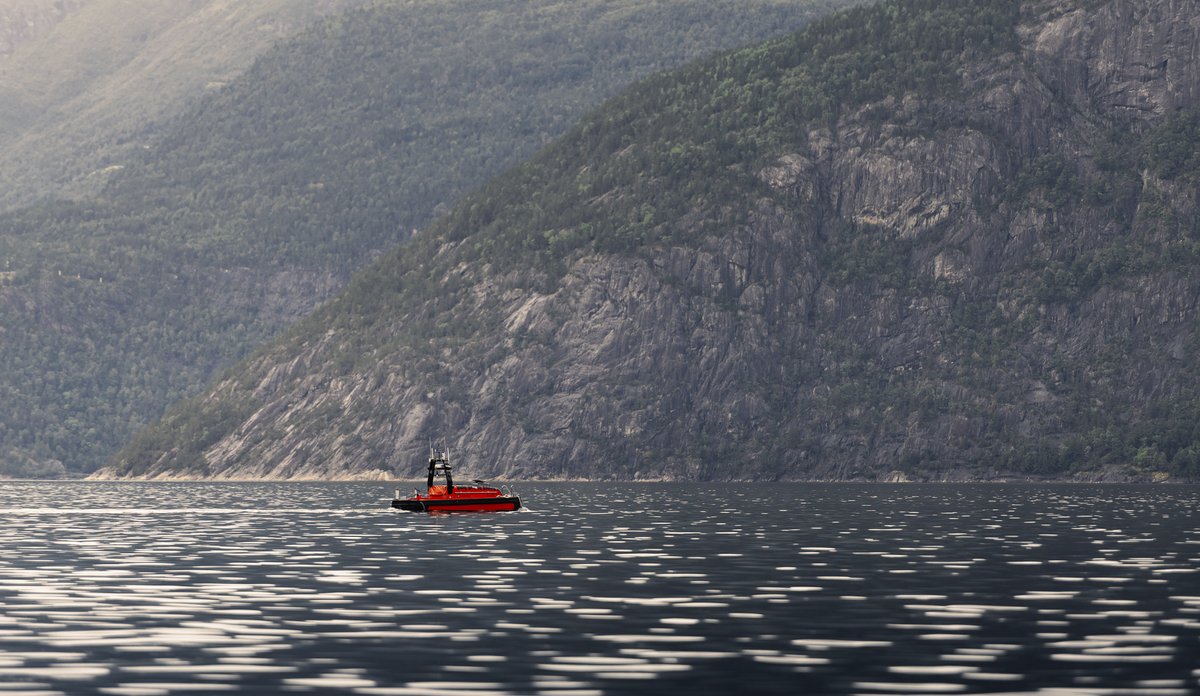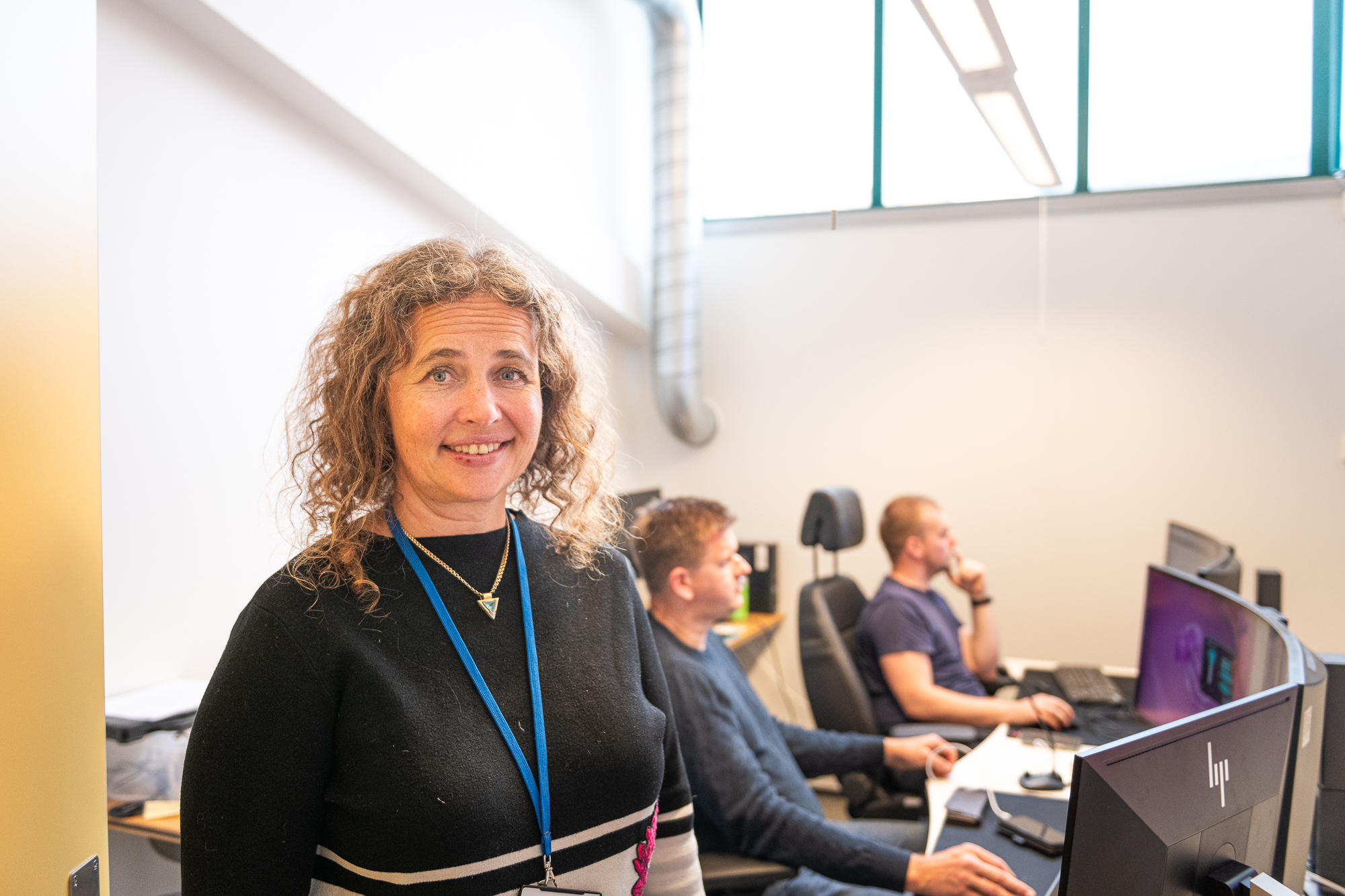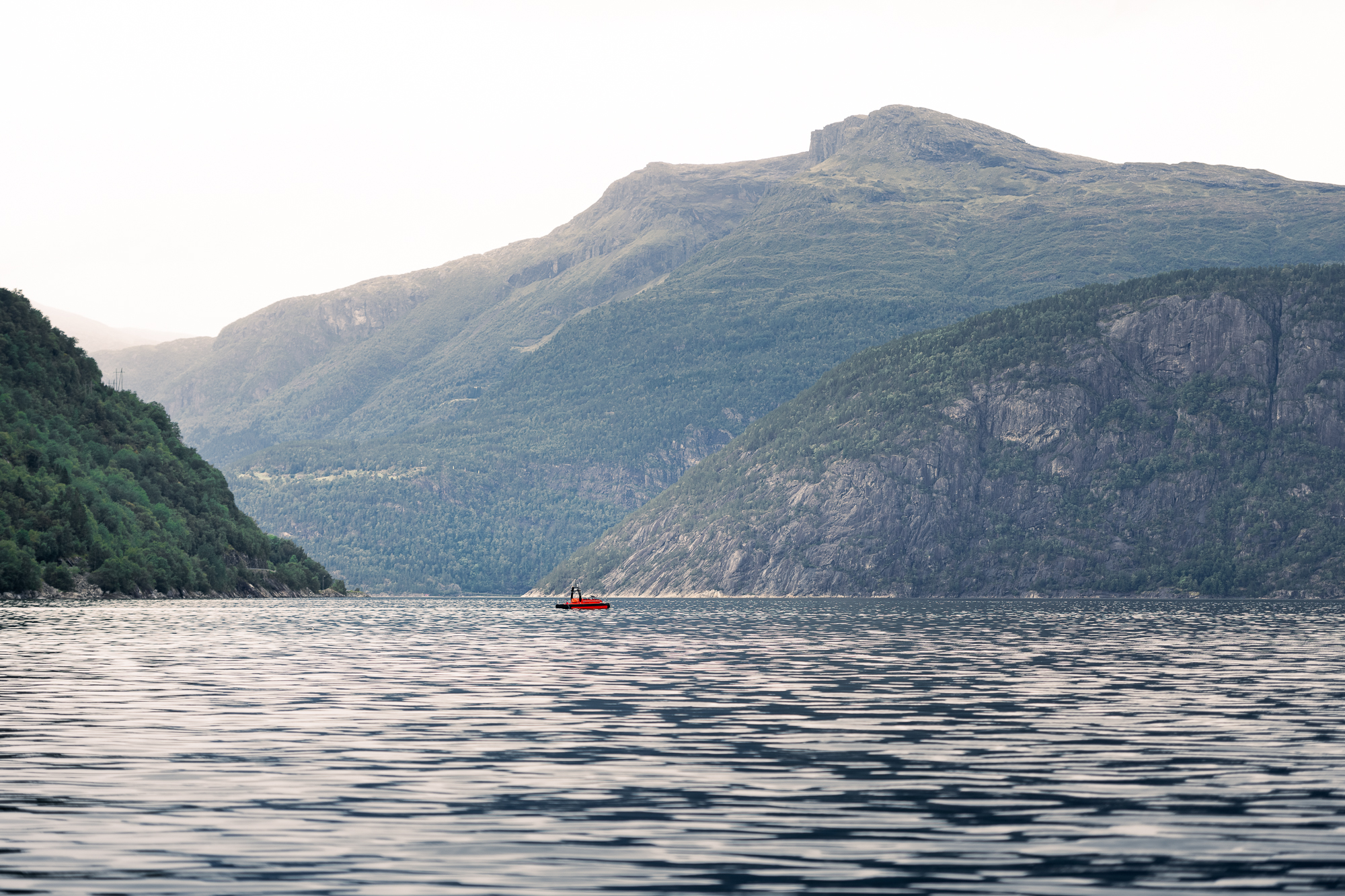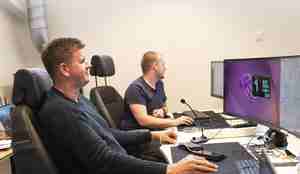Sprat cruise in Hardanger was remotely controlled from Bergen

The unmanned vessel Frigg is measuring the sprat population in Hardangerfjorden.
Photo: Christine Fagerbakke / Institute of Marine ResearchPublished: 26.09.2024 Updated: 08.10.2024
Korsfjorden, south of Bergen, 20 August 2024:
The unmanned surface vessel Frigg battles its way through high waves as it heads south.
However, the eight-metre-long USV, as it is called for short, is not completely alone in the fjord.
Not far away, a support vessel carries Inge André Utåker, the Director of the Research Vessel Department, and Johnny Ytreland, the head of Research Vessel Operations. The two men are carefully monitoring Frigg, as well as keeping in close touch with colleagues in Bergen.
Frigg is on a historic mission.
Simultaneously, at Nykirkekaien in Bergen:
The people controlling the vessel are over 20 kilometres away from Frigg.
“This is the first time the Institute of Marine Research has been allowed to control a vessel remotely from Bergen, so it’s a big moment” says Instrument Technician Joakim Skjefstad.
He is sitting in a room full by big screens. This is the Remote Operation Centre, often abbreviated as the ROC.
“This is one of the most fun parts of this job. The initial phase of something new is very exciting. There are not many places in Norway you have a chance to take part in something like this”, says Senior Engineer Henrik Gullaksen Berg while monitoring Frigg on the screens in front of him.
The ROC will become an important part of the IMR’s digital future.
Big step for the Institute of Marine Research
During this year’s coastal sprat cruise in Hardangerfjorden, both Frigg and a kayak drone were used – in addition to the traditional research vessel Prinsesse Ingrid Alexandra.
“The Institute of Marine Research is now taking a big step towards using unmanned vessels as its standard method for measuring fish populations”, says Research Director Espen Johnsen
During the cruise, he was responsible for the two unmanned vessels. While Frigg covered most of Hardangerfjorden and collected echo sounder data on sprat populations in the fjord, two days were spent testing the kayak drone in an area with a lot of sprats.
“Next we will compare the data we obtained from the kayak drone, USV and ordinary research vessel”, says Johnsen.
The scientists will use the information from the three vessels to look at the differences between the measurements they produced.
“Then we will create a model which we will use as the Institute of Marine Research gradually transitions from using research vessels to unmanned vessels as the standard method for our research. Because we must ensure that we maintain the quality of the cruise data”, says Johnsen.

Tested various data flow paths
The cruise in Hardanger is a good example of two of the IMR’s most important areas of focus over the coming years: digitalisation and the use of autonomous vessels.
“During the cruise, we tested several different data flow paths, in other words how we transfer data from Frigg to our servers”, says Linn Cecilie Moholt, Director of the Digital Department at the IMR.
The data from the instruments on board were saved locally on a disk and also simultaneously streamed to the operation centre, where the operators could follow what the echo sounder was finding. Any interesting observations were passed on to the research vessel Prinsesse Ingrid Alexandra, where the cruise leader was based. Scientific data were also streamed to a cloud server via the Starlink satellite network.
“Now we will compare the various data flow paths against each other, to assess which one worked best for this kind of cruise”, says Moholt.

Collected data 90 percent of the time
Back in Bergen, Research Vessel Director Utåker is very pleased with Frigg’s performance during the coastal sprat cruise.
“I think it went surprisingly well”, he says.
“The USV was available for data collection for 200 hours, and it delivered for over 90 percent of that time. So it collected data for 180 hours”, he adds.
After the researchers had finished measuring the coastal sprat population in Hardangerfjorden, they set sail for Sognefjorden.
Frigg was towed during this journey, because the IMR only had permission from the Norwegian Maritime Authority to remotely control it in Hardangerfjorden and Sognefjorden – and in the surrounding areas.

4G and Starlink
Before the cruise, the Director of the Research Vessel Department and his colleagues were a bit nervous about whether it would be possible to remotely control Frigg from Bergen.
“We thought we would struggle to maintain continuous communication. But even in the narrowest arms of Hardangerfjorden, we had almost constant coverage”, says Utåker.
Frigg had two ways of communicating with the operation centre: normal 4G and the Starlink satellite network.
“The broadband connection worked well. We had no critical incidents in terms of coverage”, says Utåker.

Had to be rescued once
However, not everything ran smoothly – which is only to be expected with such a big field experiment.
“We always had a support boat nearby, and we needed it a few times”, says Utåker.
At one point, Frigg experienced a data crash. A router shut down, and everything stopped working. The USV started drifting, and it had to be rescued before running aground or becoming a danger to other vessels.
“That happened once, but the support boat stepped in as planned”, says the Director of the Research Vessel Department.
In addition, he and his colleagues identified several areas for technical improvement, including a better camera, before Frigg heads out on its next mission.

The echo sounder is the key
The jewel in Frigg’s crown is its echo sounder. After all, collecting research data is the whole point of the USV.
And the cruise in Hardangerfjorden was supposed to help scientists understand whether Frigg’s echo sounder could provide equally good – or even better – data on fish populations than an ordinary vessel. The USV has the advantage of being able to reach locations which are inaccessible to ordinary research vessels, because it sits shallower in the water.
“In general, the data are of very high quality; we can see that from the echograms. The exception is when there are big waves, because then the vessel rolls so much that it has a negative impact on the quality of the echo sounder data”, says Espen Johnsen.
“So now it is important to see whether we can do something about the rolling, or if we can find other good solutions to that problem”, adds the Research Director.




